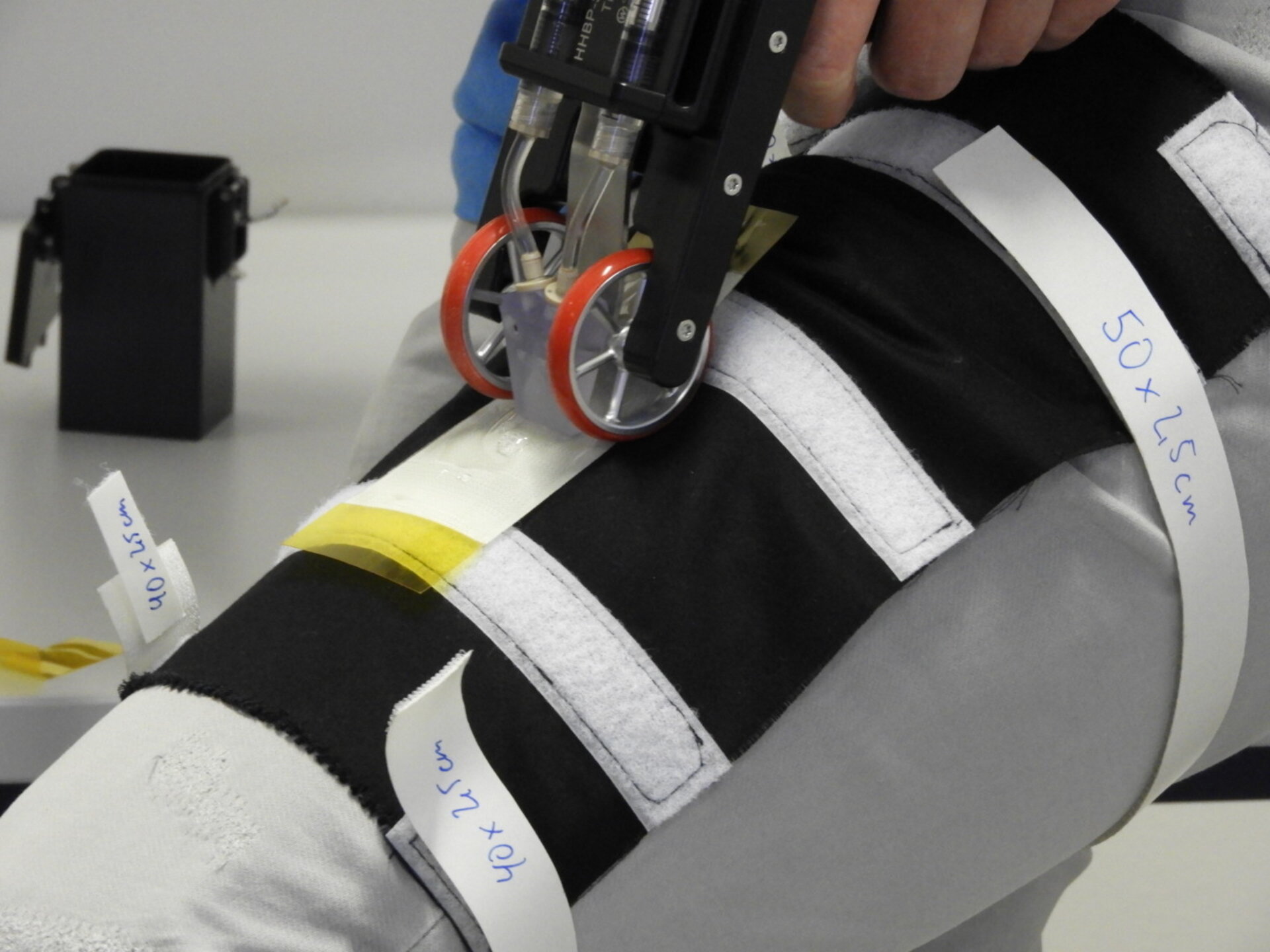In December of 2021 SpaceX sent its 24th cargo resupply mission to the International Space Station (ISS). On board the mission were various experiments—including ones involving plants and potential cures for cancer. A bioprinter that uses “viable cells” to print tissue structures was also aboard. And it makes human skin “band-aids.”

Design Taxi reported on the delivery of the bioprinter, or Bioprint FirstAid, which is a handheld device. The device, in the images above and below, uses a patient’s own skin cells to create tissue-forming patches to cover wounds. And, simultaneously, accelerate the healing process.
NASA notes the device—which kind of looks like a tape dispenser with a bendy syringe instead of tape—uses prepared bio-inks consisting of a patient’s own cells. The collection of human skin cells, coupled with a “crosslinking” material, form a “band-aid patch” in the case of an injury. (Unfortunately, it’s unclear what the cell band-aid looks like as it heals. Or after it has healed. Although it seems to spread as a clear, viscous liquid.)

NASA reports that, in the future, scientists hope to use “high-resolution” 3D bioprinting with different cell types. With these tools scientists will aim to develop new ways to produce new tissues, and perhaps even organs. Likewise, the experiment will allow for the study of regeneration and longevity. Because healing wounds would only be half the battle on an interstellar trip?
Along with the Bioprint FirstAid, SpaceX’s resupply mission also sent a monoclonal antibody study. (Monoclonal antibodies may potentially treat a wide range of human diseases.) As well as Tide Infinity, a fully degradable detergent specifically for use in space. Apparently, until now, astronauts aboard the ISS haven’t been able to wear outfits twice. Which kind of makes us wonder how comfortable they feel in their own skin.
Feature image: OHB/DLR/ESA